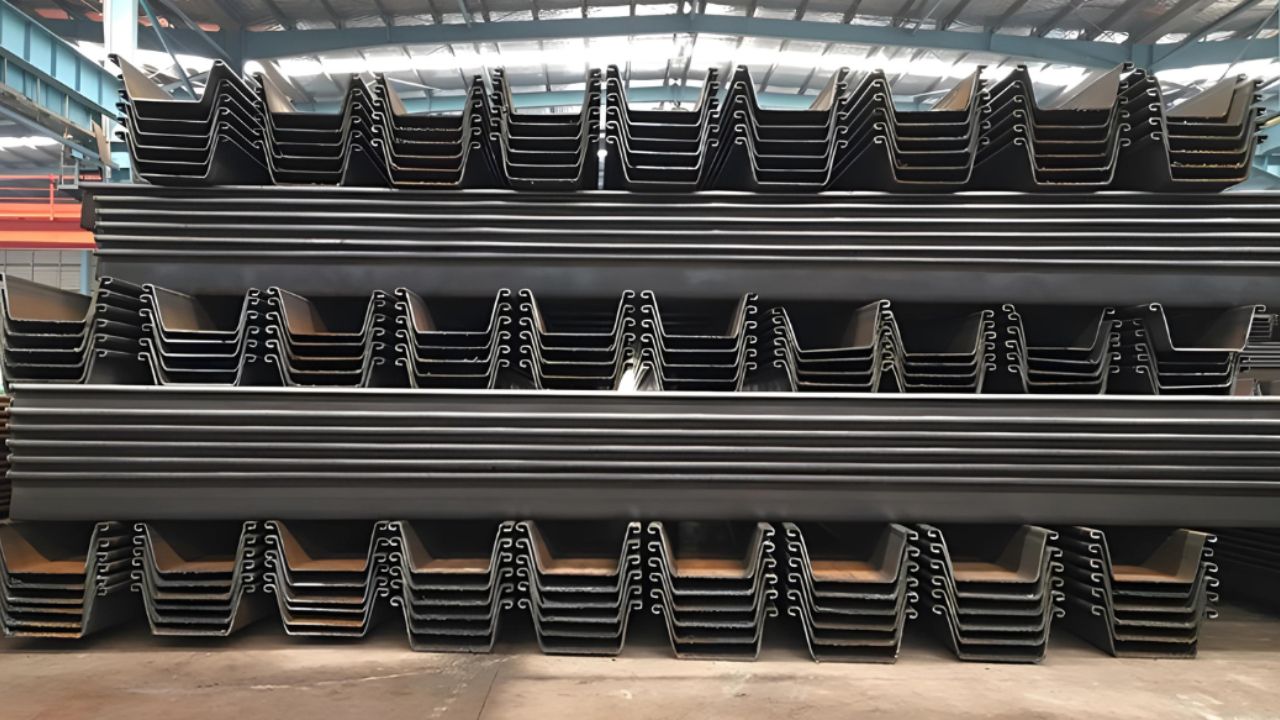Sheet Pile Types-Tuspipe are essential structural elements where they are used in harbor construction, flood control, underground car parks and deep foundation projects. Tianjin United Steel Pipes Ltd (TUSPIPE) is a company that manufactures and supplies steel products with a wide variety of sheet piles that cater to various engineering requirements. Learning the nature of various types of sheet piles, their strengths, and uses can be used to make sound decisions by engineers and project managers to ensure that the design fits the site requirements.
U-Type Sheet Piles
The sheet piles of U-type are currently the most widespread designs that are applied in the construction industry because they have a great sense of structural balance, and they are simple to install. They have a symmetrical U-shaped cross-section, with the interlocks being located close to the neutral axis, which improves the resistance to bending and the even distribution of loads. The ease of handling is also one of the major benefits of U-type sheet piles, as the installers do not need to distinguish the front and the back side when construction is being done, and there is a low possibility of errors in installation.
These piles are mostly applicable in temporary structures like cofferdams, excavation support, and flood defense structures. TUSPIPE produces sheet piles of the U-type above all-steel and thus with the best quality of materials, thereby making it stronger and durable. Their high bending moment capacity is a good choice where deep excavations are to be done or where there is high lateral pressure of the soil.
Z-Type Sheet Piles
Z-type sheet piles have been designed in a manner that provides a better strength-weight ratio and higher bending resistance than other types. They have a Z-shaped cross-section, and the joints are interlocked on the periphery of the profile. This special geometry maximizes the section modulus and enables increased load-carrying capacity with less material consumption.
Z-type sheet piling can be used in permanent structures like a seawall, quay wall, and extensive foundation works. Their optimized design makes them have a higher level of wall stiffness, which is necessary when deep or deep excavations are to be done and the excavations are subject to high lateral loads. TUSPIPE manufactures sheet piles of Z-type in different dimensions and thicknesses, giving the clients a chance to choose the options that will be most appropriate to their performance and economic needs. This type is best suited for long-term use where durability and the ability to resist environmental stresses are of great importance.
Flat Web Sheet Piles
Flat cross-section piles. Flat web sheet piles, also known as straight web piles, are constructed with a flat cross-section. They are normally applied in applications where continuous walls are necessary and the applications do not need high bending resistance. These piles are normally joined together by welding or riveting and are commonly used in riverbank protection, light retaining walls, and partitions.
Although they do not have the structural capacity of the U-type or Z-type sheet piles, the flat web piles are inexpensive and simple to make. They offer a viable solution to the less complex projects with in-depth or less challenging load requirements. The TUSPIPE provides piling of flat web sheets using high-quality and exact steel that guarantees a long life span of the piling even during unpredictable conditions of soil and water.
Key Considerations for Selection
The selection of the appropriate type of sheet piles has to be made with consideration of a number of factors. Soil conditions are a significant factor; dense or rocky soil can be better served with a stronger profile like a Z-type pile, and soft soil can be served with a U-type or flat web layout. Excavation depth, water level and environmental limitation also form part of the selection process. The engineers should also have the installation in mind since the vibratory hammers or hydraulic presses can have an impact on the pile alignment and its behavior, depending on the type of pile used.
Conclusion
The type of sheet pile to use is one of the most important choices that determines the stability, longevity, and effectiveness of a construction project. The awareness of the differences between U-type, Z-type and flat web sheet piles enables project managers to select the appropriate profile that can fit the challenges of the location. Combining the experience of TUSPIPE with its sophisticated manufacturing facilities and quality commitment, the customers receive access to the solutions in terms of sheet piles that meet the world standards and provide reasonable performance in a wide variety of applications. TUSPIPE steel sheet piles can be used as a demonstration of the quality of engineering and engineering-level security of construction worldwide, whether the work is temporary support of the excavation or long-term protection of the waterfront.
